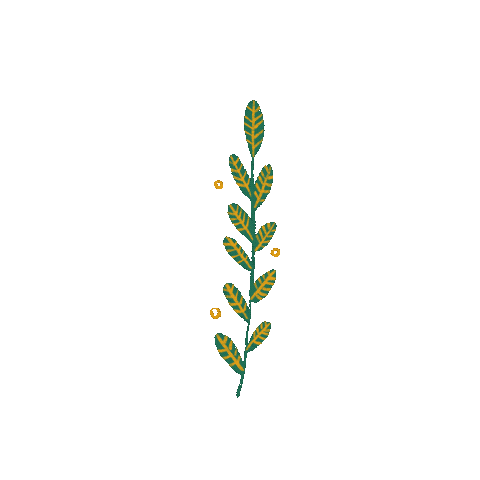

Map of the Congo River Basin.
The ‘Precursors’: Congolese Pioneers of Watercolour
Clifford Pereira
The area from where the ‘Precursors’ of Congolese Modern Art arose is a woodland savanna interspersed with forested riverbanks. Ivory was an important legal export, and there had been a long established carving tradition. One of the Precursors, Albert Lubaki, was an ivory carver prior to meeting Georges Thiry. Lubaki sold his carvings to the growing number of Europeans working in or visiting the Belgian Congo.

The Bakongo had already been producing art for centuries. Raffia textiles were an important export of the northern part of the Kingdom of Kongo from the fifteenth to eighteenth centuries, and they were used as a form of currency further south in Angola.
Scenes engraved on an ivory oliphant by the artist Songo depicting Chief Akengai and his life at court. (P. Loos Archives; Photo: Paul Louis Brussels)


Velour Shoowa, Kasai
(P. Loos; Photo: R. Asselberghs)

Kuba tapa loincloth consisting of small black
and white triangles made of beaten tree bark
and embroidery (P. Loos).
Bakuba art was characterised by the application of patterns to a range of surfaces, from the human body to wood, basketry and ivory. However, it is the raffia and so-called ‘Kasai Velvet’ for which they are most well-known. [1] The intricate designs and vibrant colours originally held meaning, but many of these interpretations were already lost by the 1920s.
Albert Lubaki’s region of Mbanza-Ngungu is one of the long-established areas of raffia textile production. The presence of abstract motifs and patterns in existing museum collections suggests that they existed at least as far back as the sixteenth century, and likely originated in textiles before being transferred to ivory.
The practice of painting exterior walls appears to have existed in rural areas of the Belgian Congo by the early twentieth century. The plain flat walls invited decoration and, as Thiry explains, local materials such as ochre, kaolin, ash, soot or charcoal which were applied with either a finger or brush. The brushes for these wall paintings were made from the stem of the fruit of the raffia palm. [2]
The earliest works by the Precursors were done in watercolour, and without training they faced many challenges. The washes dried too quickly or slowly depending on the humidity, and the application of washes often produced hard water stain marks. Shading and the ability to highlight features was also challenging.

The same pigments used for personal decoration and masks were now being applied to murals, and it appears that Albert and Antoinette Lubaki were established mural painters when Thiry first met them at Bukama. There is no written evidence that Djilatendo also painted murals, however, we do know that mural paintings were a feature of the area near Mweka and Luebo, and Djilatendo’s style certainly suggests he was familiar with mural painting.
Painted murals on Chief Yaora’s residence, Ango territory. (P. Loos Archives)


Watercolour signed ‘Pierre’ representing masked characters from the Kifwebe society, Songye people.
As a result, the artists often depicted African men with white hands, eye sockets, ears or even entire faces. They also painted them in one flat colour (often blue when depicting Africans), which was often so concentrated that the facial features became indistinguishable. With few exceptions, the Precursors painted figures in profile. Djilatendo had a specific way of depicting humans—small faces and large bulbous foreheads, which is a form typical of Bakuba masks.
Early twentieth-century Europeans recognised their artistic interactions only with the Northern margins of Africa, conveniently ignoring the cultural and artistic exchanges between African kingdoms such as the Kongo and their European counterparts. By the early twentieth century, European museums confined the art of this vast mainly tropical region to the realm of ethnography, and when exceptional pieces of African art, such as the sixteenth-century brass head of the Queen Mother of Edo, were encountered by Europeans, they were often hailed as being imports from a lost tribe of Israelites or ancient Egypt, as fakes, or as the work of some mythical people. [3] In a major detour from the norm, Georges Thiry and Gaston-Denys Périer considered the Precursors’ watercolours as African art instead of ethnographic work. [4]

Antoinette Mfimbi (Lubaki)
Untitled (Marital Scene)
Watercolour on paper, 52 x 66 cm
Signed ‘Atoinet’, ca. 1927–29
Provenance: Charles-Auguste Girard Collection, Felix Collection; Photo: Maureen Vincke
This early history of the Precursors of modern Congolese Art came to an end in the 1930s when Thiry and Périer had a falling out. After this, European interest in early Congolese watercolour painting faded. Without the support of patrons in the Belgian Congo and Europe, the artists were unable to find paper, paints or brushes. In fact, Albert Lubaki was living in poverty in 1939 when he was contacted by the Swiss anthropologist Eugene Pittard.
This raises the question – was there ever a genre of ‘African’ or ‘Congolese Art’? To suggest that one art form or style encompasses the entire African continent is as absurd as the general category of ‘Asian Art’. The idea of a ‘Black Africa’ and ‘Sub-Saharan Africa’ were imposed, to a large extent, by Europeans. The Belgian Congo, or rather its predecessor, the ironically named Congo Free State, was itself created by the Berlin Conference of 1885. Within this imperial construct the Precursors would have identified themselves ethnically as being Mkongo (Albert Lubaki), Mupende (René Masalai), Muluba (Ngoma) and Lulua (Djilatendo).
All of the Precursors did come from the Bantu language family region of the Belgian Congo, and everyone, except for Djilatendo, belonged to ethnic groups that resided across imperial borders.
[1] Mack 2005, 154.
[2] Thiry 1982.
[3] Mack 2005, 100.
[4] Stanard 2019, 49.

地址:香港薄扶林般咸道90號 地圖顯示位置
© 版權屬香港大學美術博物館 2021
Address: 90 Bonham Road, Pokfulam, Hong Kong View the location on Google Maps
Tel: (852) 2241 5500 Fax: (852) 2546 9659 Email: museum@hku.hk
© 2021 by University Museum and Art Gallery, HKU. All Rights Reserved




